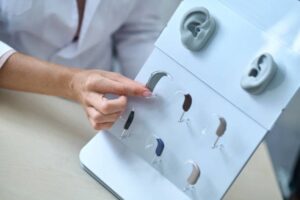Chiropractic is a drug-free, hands-on, natural approach to healthcare. It is concerned with diagnosing, treating, and preventing mechanical disorders of the musculoskeletal system (primarily the spine) and their effect on the nervous system and general health.
Most people find that while under chiropractic care, their pain decreases, and they start feeling better in other ways, too! It’s about maximizing your health potential. For professional chiropractic Adelaide, check this out.
Chiropractors are drug and surgery-free
 Chiropractic is a healthcare profession that focuses on the relationship between the spine and nervous system and how structural problems can affect the function of other systems in the body. Chiropractors are university-educated, nationally registered, and regulated healthcare professionals who offer a drug-free, hands-on, natural approach to spinal care.
Chiropractic is a healthcare profession that focuses on the relationship between the spine and nervous system and how structural problems can affect the function of other systems in the body. Chiropractors are university-educated, nationally registered, and regulated healthcare professionals who offer a drug-free, hands-on, natural approach to spinal care.
They work to find these subluxations and adjust the spine to reduce or correct them. Often, this helps restore the normal, healthy nervous system functioning and allows the body to heal without using drugs or surgery.
Many patients choose to use chiropractic care as a way to avoid prescription pain medications, which have dangerous side effects and can eventually lead to addiction. Instead, they opt for a drug-free treatment that includes regular adjustments and custom orthotics. They also provide therapy and at-home exercises to help improve posture, flexibility, and general health. They may even offer nutritional advice if they think it could benefit their patients.
Chiropractors focus on the spine.
Chiropractors use hands-on spinal manipulations to treat your musculoskeletal pain. These techniques help improve the relationship between your spine and nervous system, alleviating pain and stiffness. The goal is to provide long-term results without the use of drugs or invasive surgery.
In addition to spinal manipulation, chiropractors use a variety of adjunctive therapies to relieve pain and improve flexibility. These include ice packs, heat lamps, and electrotherapy. Massages and stretching exercises can also be used to reduce muscle tension.
One of the most common ailments treated by chiropractic is sciatica, a nerve condition that causes pain from the lower back down to the legs. Chiropractic care can help relieve this pain by realigning the vertebrae, thus alleviating nerve compression.
Chiropractors use manual therapy.
Chiropractors use hands-on techniques, including joint adjustment and manipulation. These techniques help reduce pain and dysfunction related to the musculoskeletal system, particularly the spine. They also help restore proper function to the nervous system.
During a physical exam, chiropractors identify areas of myofascial tissue that are stiff and rigid. They do this by applying pressure with their fingers and examining the area for tenderness. They then perform myofascial release therapy to relieve the stiffness.
Chiropractic is an alternative health care that emphasizes the inherent recuperative power of the body to heal itself without drugs or surgery. It includes patient education, exercise, ergonomic and postural advice, and lifestyle recommendations. This patient-centered approach respects the value and responsibility of cooperating with other healthcare practitioners when in the patient’s best interests. It includes the appropriate use of diagnostic imaging based on guidelines. For professional chiropractic Adelaide, check this out.
Chiropractors work with other health professionals.
In today’s changing healthcare environment, interprofessional collaboration has become increasingly common. Chiropractors specialising in diagnosing and treating musculoskeletal disorders can contribute to such collaborations by promoting a patient-centered approach to health care.
However, a lack of literature about this type of collaboration limits our understanding of its benefits. Future research is needed to explore the contexts and outcomes of interprofessional practice with chiropractors.
Health coaches can help clients with lifestyle modifications that support chiropractic treatment. This combination of care allows patients to reduce pain, improve mobility, and increase overall health.
Chiropractors spend five years in University-based training, mastering the ability to assess and gently manipulate all joints of the body, including the small joints of the hands and wrists, the large joints of the feet and hips, and even the ribs and jaw joint (TMJ). By correcting spinal misalignments, a chiropractor can calm down oversensitive nerves causing symptoms such as headaches, muscle weakness, and referred pains in the arms and legs and pins and needles. For professional chiropractic Adelaide, check this out.
 Hearing loss is a common problem affecting people of all ages, from infants to seniors. It is a condition that can impact communication in various ways, making it difficult to understand speech and participate in conversations. While the severity of hearing loss can differ from person to person, the consequences are often the same. Relationships can suffer, work productivity can decrease, and mental health issues can arise. However, with early detection and treatment, there are ways to improve hearing and communication skills.
Hearing loss is a common problem affecting people of all ages, from infants to seniors. It is a condition that can impact communication in various ways, making it difficult to understand speech and participate in conversations. While the severity of hearing loss can differ from person to person, the consequences are often the same. Relationships can suffer, work productivity can decrease, and mental health issues can arise. However, with early detection and treatment, there are ways to improve hearing and communication skills. All the different sounds in the English language require coordination between the muscles of the lips, teeth, tongue, vocal cords, jaw and palate to produce. Children have a natural tendency to produce articulation errors as they learn the different sounds in their early childhood. Some children have difficulty producing the correct sound consistently, which is when they may need intervention from a speech-language pathologist.
All the different sounds in the English language require coordination between the muscles of the lips, teeth, tongue, vocal cords, jaw and palate to produce. Children have a natural tendency to produce articulation errors as they learn the different sounds in their early childhood. Some children have difficulty producing the correct sound consistently, which is when they may need intervention from a speech-language pathologist. Unlike an off-the-shelf orthotic with arch support and other cushioning features, custom orthotics are designed to fit the shape of your feet precisely. They are bespoke and are based on your foot scan data. They optimise alignment, provide superior support and cushioning, and can correct abnormal foot function.
Unlike an off-the-shelf orthotic with arch support and other cushioning features, custom orthotics are designed to fit the shape of your feet precisely. They are bespoke and are based on your foot scan data. They optimise alignment, provide superior support and cushioning, and can correct abnormal foot function. Diagnosis for an injured nerve typically relies on its history and physical examination; CT/MRI scans or X-rays are rarely necessary as the diagnosis is usually clinical. On occasion, however, an MRI or CT scan may reveal a well-defined soft tissue mass associated with an injured nerve – commonly not an actual tumour but more of an accumulation of epineural adipose and fibrous tissue encasing it; alternatively, this could be a true neuroma such as neural fibrolipoma or an Acoustic Neuroma; also called neural fibrolipoma; Ganglioneuroma or Nerve Sheath Myxoma.
Diagnosis for an injured nerve typically relies on its history and physical examination; CT/MRI scans or X-rays are rarely necessary as the diagnosis is usually clinical. On occasion, however, an MRI or CT scan may reveal a well-defined soft tissue mass associated with an injured nerve – commonly not an actual tumour but more of an accumulation of epineural adipose and fibrous tissue encasing it; alternatively, this could be a true neuroma such as neural fibrolipoma or an Acoustic Neuroma; also called neural fibrolipoma; Ganglioneuroma or Nerve Sheath Myxoma.